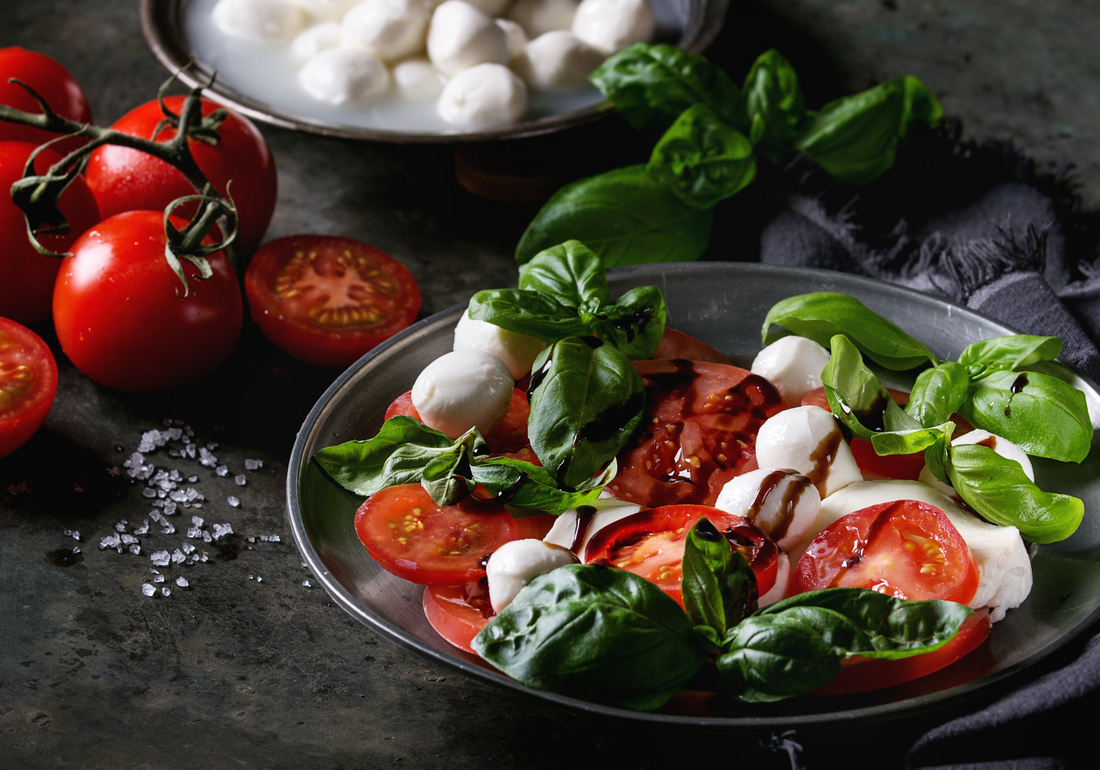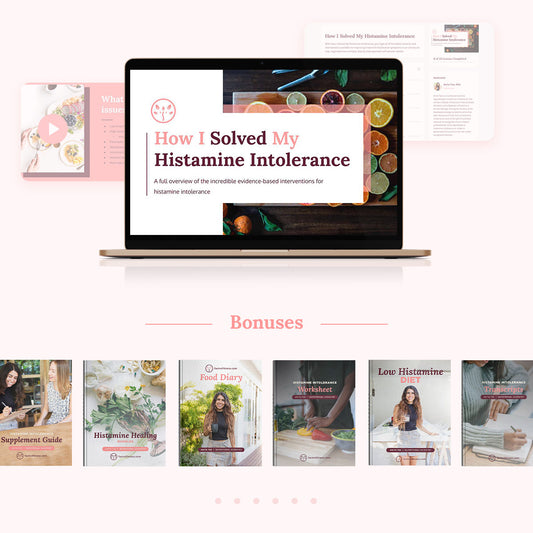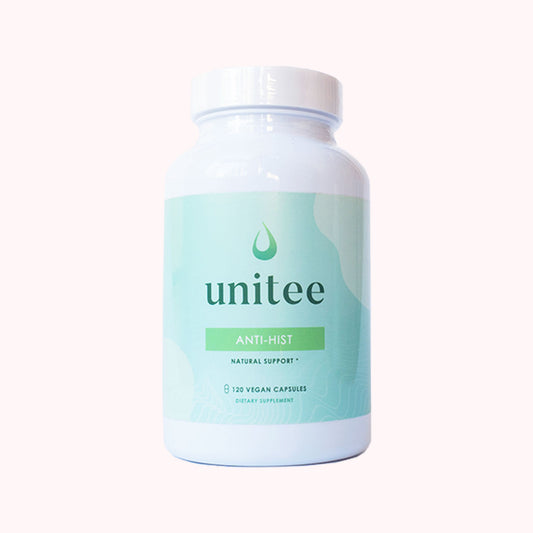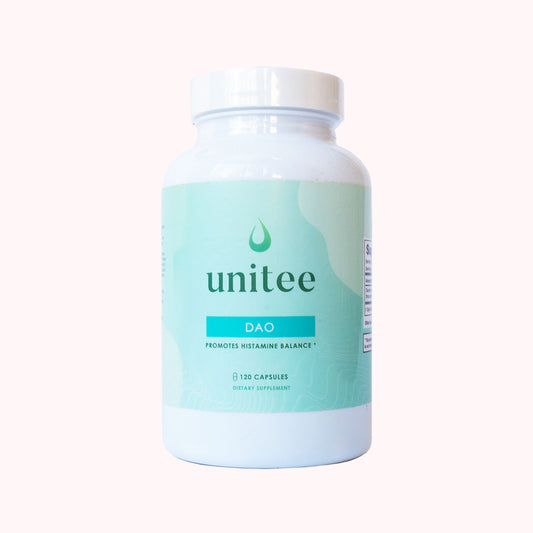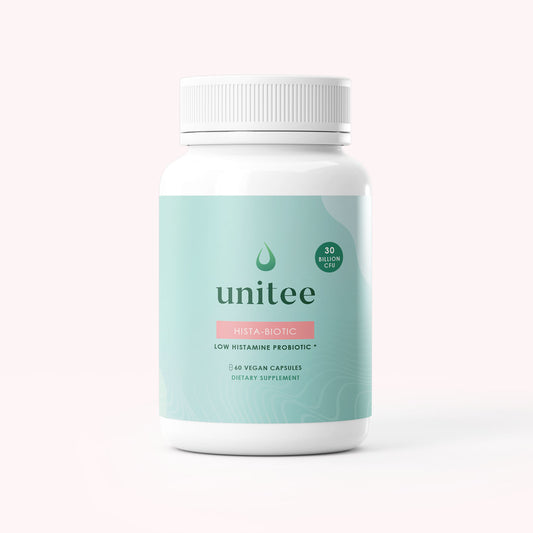You’ve seen a list. Maybe you’ve seen many different lists…
Lists that tell you which foods you should be avoiding because of the histamine flare ups you're getting, in the hope of preventing symptoms like itchy eyes, skin rashes, and a whole host of other unexplained and irritating symptoms.
Yes, it’s easy to think about simply avoiding these foods as a way to reduce your histamine load, but there’s also significant merit in understanding why food can be a trigger.
This understanding will not only help you to make better decisions about the foods that you choose to eat (and decipher those confusing, and sometimes conflicting food lists), but it will also help you to understand the underlying cause of your histamine intolerance, a huge first step towards managing it!
Let me explain…
Getting To Know Histamine and Why It Causes Intolerance
By now you’re likely aware that histamine is part of a group of chemical compounds in the body called biogenic amines. There are a number of different types of amines, the type of which characterizes the way in which that particular amine group functions in the body.
Histamine is categorized as a monoamine, a simple amine with the primary role of acting as a neurotransmitter, or chemical, that has a mediating response on the brain and spinal cord. When activated, this histamine neurotransmitter causes arousal and a state of heightened attention (1).
Furthermore, histamines are stored in and released from mast cells and basophils, which are two important cells responsible for immunity. These cells release histamine during an allergic reaction, or when tissue damage is present (2).
That means, any time there is a factor that causes the immune system to respond to potential danger, histamines are released. Or, when there is any sort of damage to any of your tissues, histamines are released. Even if you don’t know that damage has been done, as is the case with toxins dreaming down the cells lining your digestive tract, for example, your body will be flooded with more histamines.
When it comes to the endogenous, or internal, formation of these biogenic amines, it's a process that occurs through chemical reactions, and uses the body's available supplies of amino acids. The more biogenic amines your body needs to produce, the more it can alter the state of your body’s amino acid profile.
As a quick reminder, amino acids are the building blocks of protein, of which there are 20 that the body needs to function, nine of them can only be obtained through the diet while the other 11 can be made within the body itself (3). If these essential amino acids are being used up too quickly because they need to make biogenic amines, and the supply from your food doesn’t replenish them at a fast enough rate, some of the other important processes in the body that use them may not be able to take place.
What’s also so interesting about the creation of these biogenic amines, is that they can be made by metabolic processes that take place within a plant or animal, and what might not be so obvious, is that micro-organisms like bacteria, can synthesize them too (4)!
Do you see where we're going with this?
The Problem With Food and Histamine Intolerance
So what's an important link to consider here?
The microbiome, of course!
Your gut is home to trillions of little critters that are able to transform the l-histidine amino acid (found in the food that you consume) into the biogenic amine, histamine (5).
The foods in your diet also contain varying concentrations and strains of bacteria that produce these biogenic amines. When foods begin to spoil, the number of biogenic amines produced by the bacteria increase. Spoiling food creates a significant amount of waste and waste equals a loss of profit. Which is why food spoilage is an area of the food industry that manufactures work hard to combat!
It's why so many preservatives and other compounds are used in packaged foods. The trouble is that many of them actually liberate histamine in the body... So on one hand, biogenic amines are prevented from being produced in the food, but increase the levels in the body. Counter-intuitive, don't you think (6)?
What this also means, is that your histamine levels can increase not only because of your individual makeup of gut bacteria, but because of the type and age of the foods that are going into your body.
Don't Forget Drinks and Histamine Intolerance
Food isn't the only thing we can put in our mouths that can cause a histamine response. Many of us enjoy the occasional drink to unwind. Unfortunately, when it comes to histamine intolerance, alcohol can do more harm than good.
When you drink alcohol, it not only acts as a histamine liberator because it's fermented (7), but it also contains histamine-releasing microbes. Another way that alcohol can influence your symptoms of histamine intolerance is that it also increases histamine absorption through the intestines and inhibits the effects of DAO (8).
DAO is that essential enzyme produced by the liver that helps to break histamine and other biogenic hormones down. If your histamine levels rise considerably, there’s a chance that your liver can’t keep up with the demand of producing enough DAO, and your histamine levels continue to rise. We also frequently see that those with histamine intolerance are also simply not able to make enough DAO from the get-go. Either they have a genetic mutation that reduces the production of the enzyme, or they don’t have enough of the enzyme building blocks, one of which is vitamin B6. So, nutrient deficiencies can also cause DAO deficiencies.
You would be spot on to say that alcohol has three strikes when it comes to histamine intolerance, which is why it’s often recommended to abstain from alcohol completely when you’re trying to reduce your histamine load, even if it’s just for the first few weeks of your intervention. If you do have to drink, try finding a low histamine wine.
If you’d like to completely abstain from alcohol, but still want to enjoy the social aspect of having a glass, the world of non-alcohol drinks is really taking off. Mocktails are all the rage, which means you have more than one option to enjoy yourself. There is one word of caution, though: before you drink, look at the ingredients! Mocktails can be made with many different ingredients, many of which may be histamine-containing or liberating. Be sure to keep a quickly accessible histamine food list on hand to refer to.
Now, these problems don’t only arise in people that are sensitive to histamines; even healthy individuals can develop symptoms of excessive histamine accumulation should they have a particularly high load after consuming histamine-containing foods. When you have histamine intolerance however, even smaller amounts of histamine-containing foods can cause a variety of severe and often debilitating symptoms.
...which is why a low-histamine diet should be the first step towards managing of histamine intolerance, an effective way to improve your quality of life.
The Low Histamine Diet: An Easy Approach
Hey, remember those lists we spoke about earlier?
It is difficult to decipher which one is “right” for you; but because you’re a unique individual, your reaction to some foods may be worse than it is for others with histamine intolerance.
I’ve created a post that details all of the dos and don’ts to follow when starting the diet. Remember, if you see a symptom reduction within the first two weeks, that is highly indicative of a histamine intolerance. However, this doesn’t mean you should stop the diet after these two weeks! This is just the beginning of a new journey to improving your gut health, and healing your histamine intolerance.
I've put all of this information into a free Guide to Histamine Intolerance that also explains additional ways to identify your food sensitivities, utilize helpful supplements and reduce your symptoms. Click below for the free Guide to Histamine Intolerance!
What's more is that the low histamine diet is all-natural, and the options provide more than enough nutrients to keep your body healthy and strong. It even points out healthful foods that actually begin healing your body from the inside out (9).
This is an elimination-style diet to reduce histamine load, which is typically followed for 4-8 weeks with the guidance of your doctor. Once your symptoms dissipate, it’s important to follow a re-introductory phase, that will further increase the variety of foods and nutrient profiles you’re able to give to your body.
Healing From Histamine Intolerance Is Possible!
Food isn’t supposed to cause you harm, or leave you feeling less than great every single day. When it does, it’s crucial for your overall health and wellbeing to take steps to track down and remove the offenders from your diet. Once you're armed with this information, you will have the power to bring back balance to your system and maintain it long term.
I hope this can be the big first step in your journey to becoming histamine-symptom free!
References
- Purves D, Augustine GJ, Fitzpatrick D, et al., editors. The Biogenic Amines. Sunderland (MA): Sinauer Associates; 2001. Neuroscience. 2nd edition.
- Jutel M, Akdis M, Akdis CA. Histamine, histamine receptors and their role in immune pathology. Clin Exp Allergy. 2009;39:1786---800.
- Kovacova-Hanuskova E, et al. Histamine, histamine intoxication and intolerance. Allergol Immunopathol (Madr). 2015.
- Fernandez, M., et al. Impact on Human Health of Microorganisms Present in Fermented Dairy Products: An Overview. BioMed Research International. 2015. 412714. 13.
- Barcik, W., et al. Immune regulation by histamine and histamine-secreting bacteria. Current Opinion in Immunology. 2017. 48:108-113.
- Schirone, M., et al. Histamine Food Poisoning. Histamine and Histamine Receptors in Health and Disease. Handbook of Experimental Pharmacology, vol 241. Springer, Cham.
- European Food Safety Authority, 2011. Scientific Opinion on risk based control of biogenic amine formation in fermented foods, EFSA Panel on Biological Hazards (BIOHAZ). EFSA J. 2011;9:2393.
- Matsuse, H. Mechanism and management of alcohol-induced asthma. Nihon Arukoru Yakubutsu Igakkai Zasshi. 2016 Jun;51(3):214-220.
- Mastzell Activierung Info Schweiz. Introduction to mast cell activation syndrome.

Anita Tee
My name is Anita Tee. I'm a nutritional scientist who specializes in histamine intolerance. I hold a Master of Science in Personalized Nutrition and a Bachelor of Science in Human Biology and Psychology. For the past ten years, I have used my experience in nutritional and medical health sciences to create a scientifically backed, natural approach to healthcare that relies 100% on evidence-based research. As I previously suffered from - and overcame - histamine intolerance, my focus is to increase recognition and expand the available resources and protocols available for resolving this particular disorder. To date, I have helped over 4,000 individuals fully resolve or better manage their histamine intolerance symptoms.

